Skip to: Sectoral variegation // Marginal variegation
There are a lot of colourful tradescantia cultivars. Many species have intense and variable pigments in their leaves. Some have glittery silver blister variegation. And there are weird and wonderful mutations that make colours seemingly appear and disappear as the plant grows. All of these colour variations are the subject of a future article. Today I’m just focusing on perhaps the single most common type of variegation – the pale stripes of an albino chimera.
A genetic chimera (or just a chimera) is a single organism which is made up of cells with two or more different sets of genetics. In the case of plants, we generally notice a chimera when one set of genetics has a mutation which prevents it from producing chlorophyll – it is albino. When this happens the plant will have a visible mixture of parts which appear white (or perhaps yellow, cream, or pink) from the albino genetics, and parts which appear the usual green from the typical genetics.
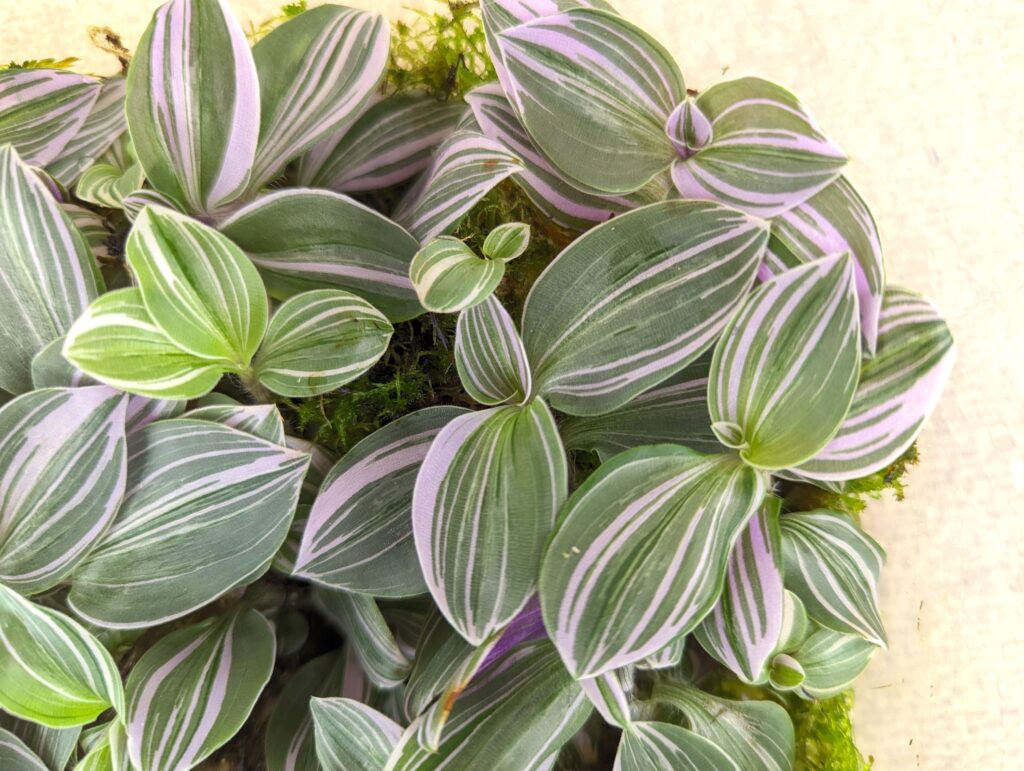
There are two different appearances of chimeral variegation in the Commelinaceae family, but people don’t often distinguish them. It can be hard to see the differences at first, but once you’re able to recognise the patterns it helps a lot with cultivar identificaiton.
So in this article I’m going to give names to the two types of chimeral variegation. And I will describe them as precisely as possible, to help other people to recognise the differences too. I’ve decided to call them marginal variegation and sectoral variegation.
Sectoral variegation
In this type, the albino and green parts show up in random sectors on the leaves. Each green or albino stripe extends all the way from the base of the leaf to the margin (although it may have a mottled or broken-up pattern within the stripe). The stripes can be any width, up to and including covering the entire leaf.
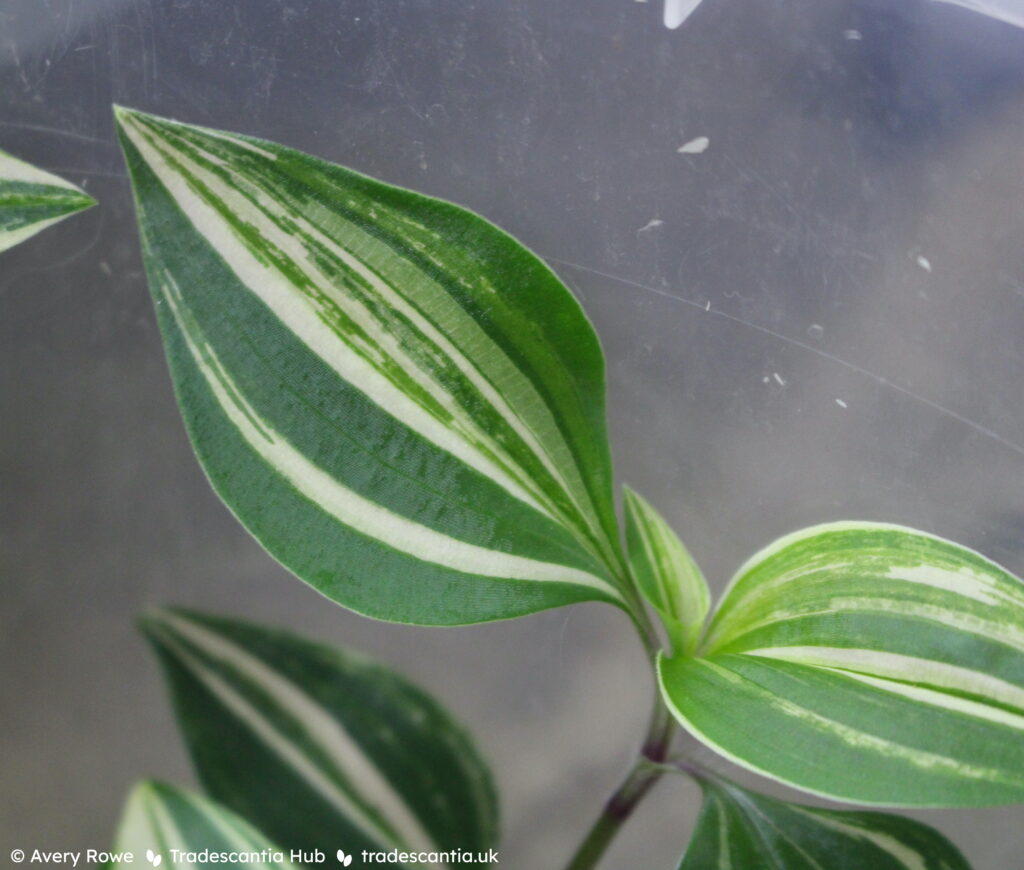
Another way of describing this pattern is by its inherent randomness and variability. In sectoral variegation it’s normal and very common to have stems which become pure green or pure albino, and don’t show the other colour at all. When these pure stems arise, they’ll never regain the other colour, because its genetics are no longer in the growth point. So cultivars with this pattern are prone to reverting (going fully green), and generally have an extremely unpredictable appearance. Two specimens or two stems of the same cultivar can look almost entirely different.

I also sometimes think of this as being “equal” variegation, in the sense that the green parts and the albino parts are acting as equals in the pattern. If you take an image of the plant and change all the albino parts to green, and change all the green parts to albino, it will still look like a normal specimen of the same cultivar. Any green stripe can be the same shape as any albino stripe.
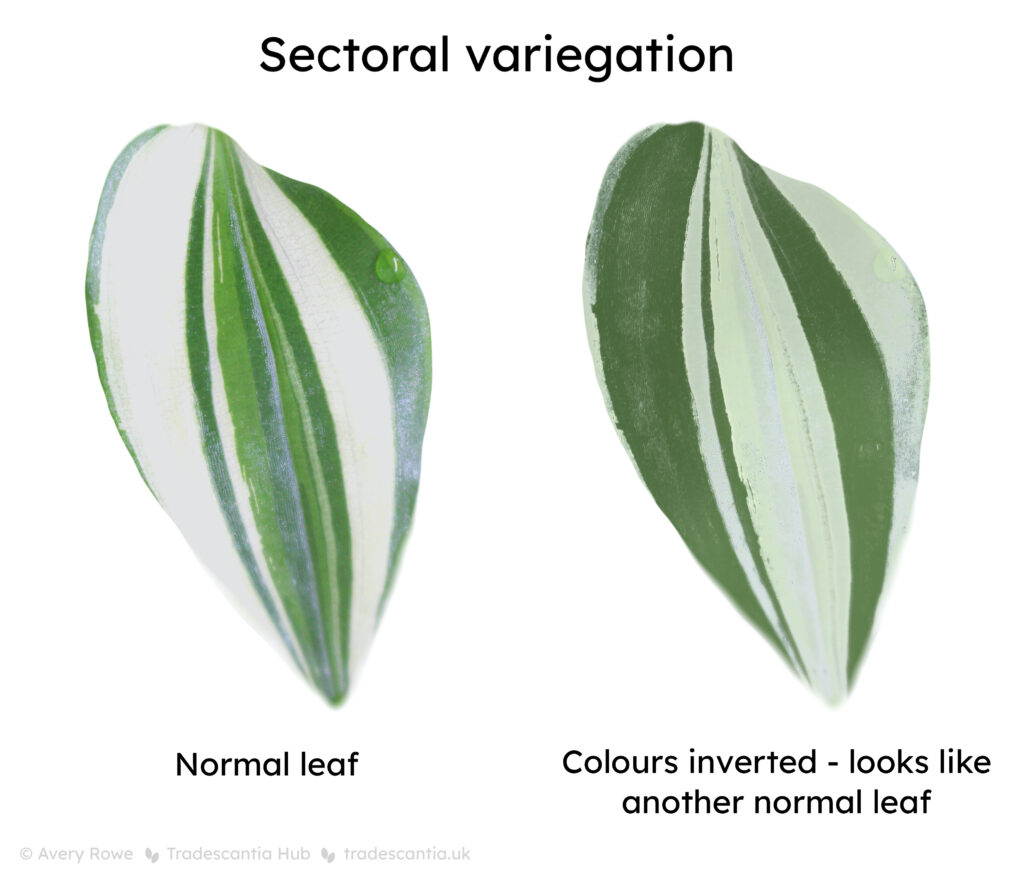
Marginal variegation
In this type, the “background” of the leaf is albino, and there are green stripes extending upwards from the base but not quite reaching the margins. The result is the appearance of an albino border around every leaf, with the green stripes reaching up towards it and albino stripes reaching down from it. Often the green parts are greyish or silvery in tone, although there may be some fully-saturated green stripes too.
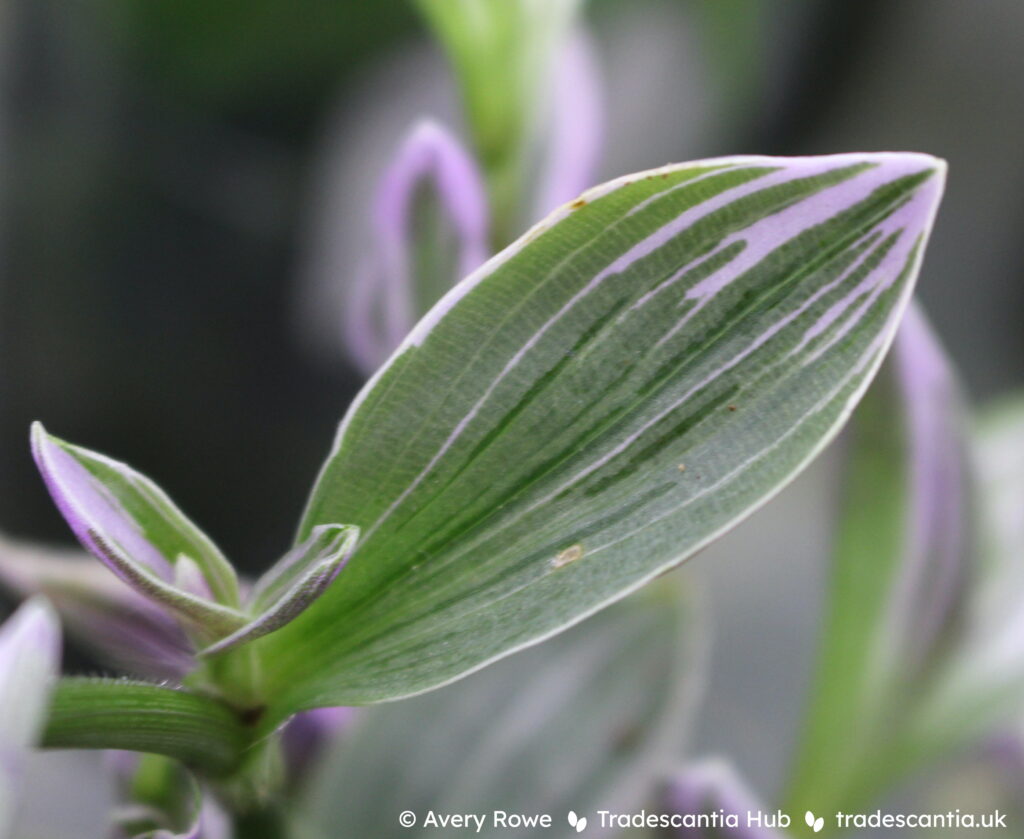
I also think of this as being “unequal” variegation because the albino parts and the green parts behave very differently. The albino always starts at the margin of the leaves, and the green always starts at the base. If you took an image of the plant and changed all the white parts to green, and all the green parts to white, the pattern would be completely inverted. The green stripes and the albino stripes are very different shapes.

Another way of describing this pattern is by its stability. The amount of striping can vary as the balance between the albino and green parts changes, but every leaf has albino at the margin and green at the base. Because of this, it’s unusual to find truly pure-green or pure-albino stems.
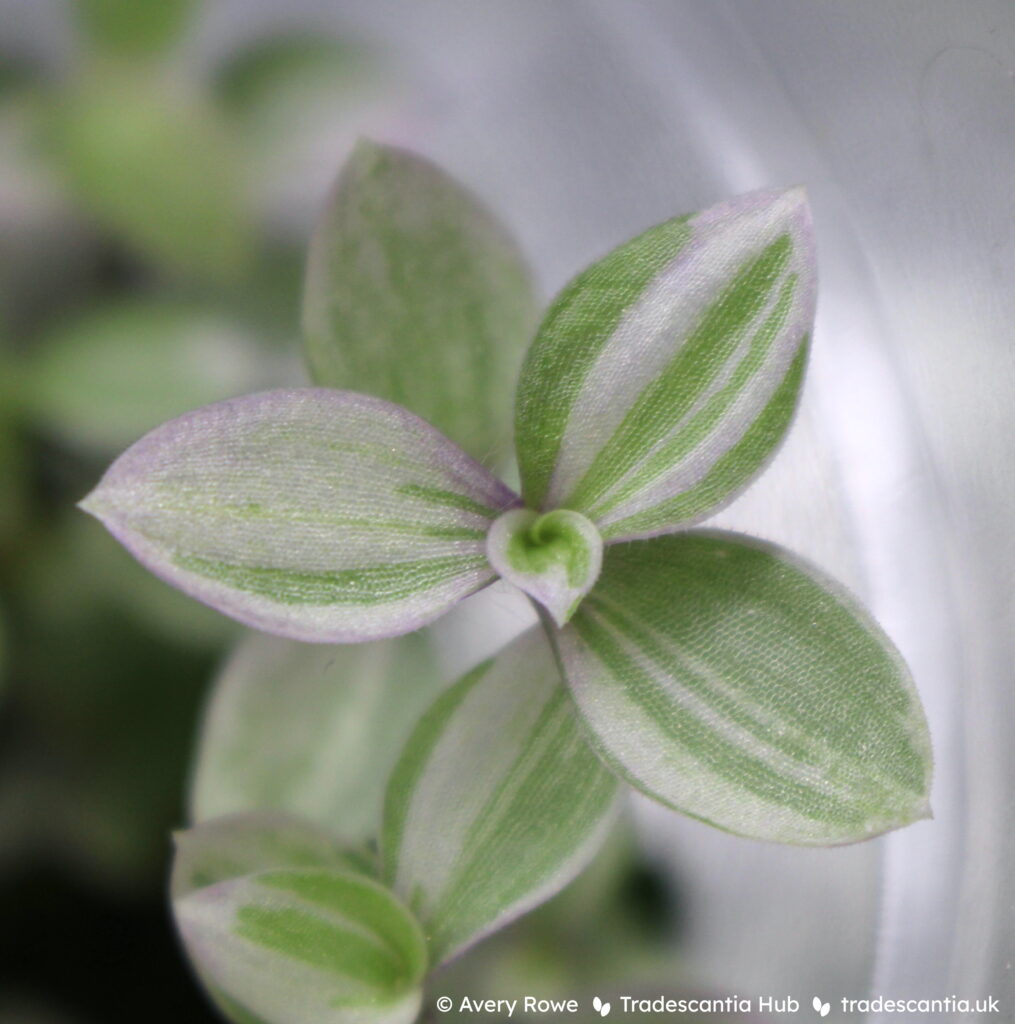
How to tell them apart
There are several different tricks you can use to distinguish these two patterns of variegation. I’ll close with this handy reference table!
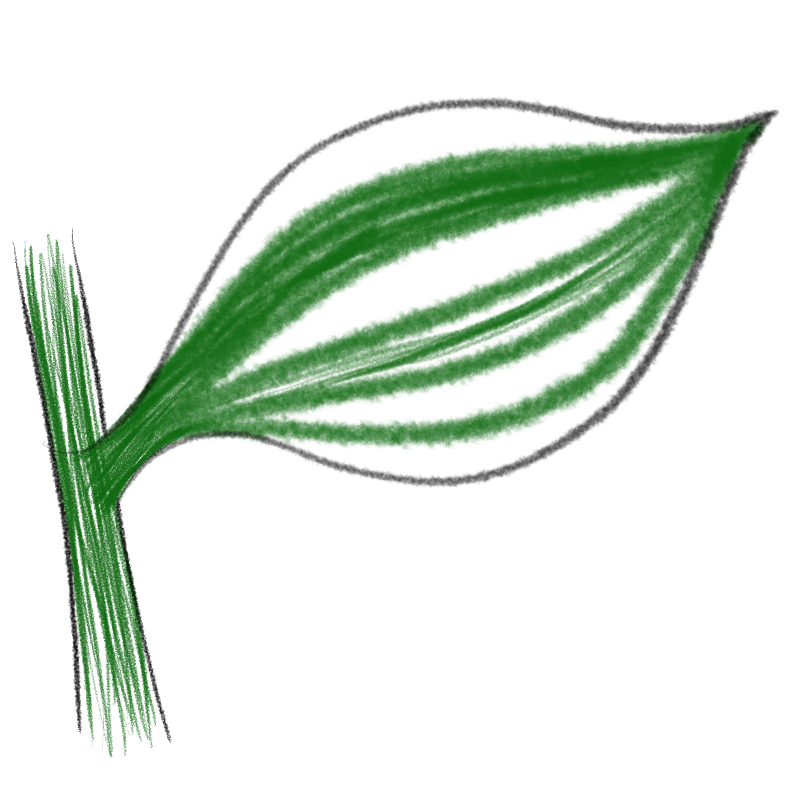 |  | |
| Sectoral | Marginal | |
|---|---|---|
| Green stripes | Extend all the way from the base to the margin | Start at the base and don’t reach the margin |
| Albino stripes | Extend all the way from the base to the margin | Start at the margin and don’t reach the base |
| Pattern stability | Very prone to making pure green and pure albino stems | Rarely makes pure green stems, almost never makes pure albino stems |
| Imagine inverting the colours | Still looks like a normal plant of the same cultivar | The inverted pattern looks completely different |

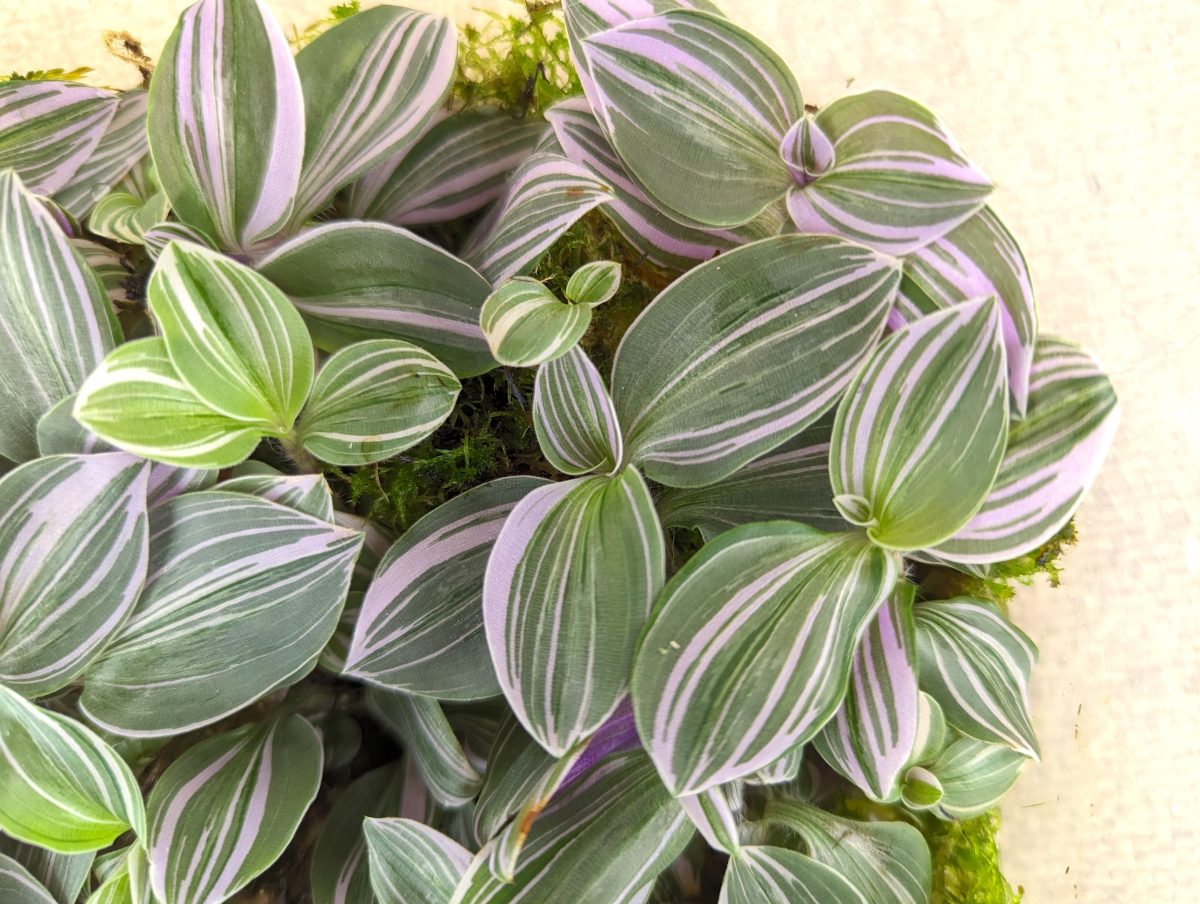
2 replies on “How to recognise types of chimeral variegation”
What happens when a chimera reproduces? Does its offspring have the same genetic doubleness or does it choose one or the other, perhaps based on what cells made the flower?Are they infertile? I saw you grew a variagated Zebrina from seed but perhaps that is genetic variagation and not chimerism.
I have a quadricolor, is this a poly-chimera? Sorry for all the questions!
Most of the time, when a chimera produces seeds each seed will have only one set of genetics. So some of the seedlings will be pure albino (not viable, and usually don’t like much past germination if they do even germinate) and some will be pure normal (so look like “reverted” stems of the parent cultivar). But there are some chimeras which do produce variegated seedlings. It depends on the way the seeds are formed and exactly how the chimera works. These are things that would have to be studied in detail for each individual cultivar to understand (and as usual there has been very little genetic or cellular research on cultivated tradescantias!), so mostly we just don’t know.
The silver variegation on T. zebrina is not chimeral, it’s built into the genetics of the species itself which is why seedlings will usually have the same silver bands. For the same reason, if ‘Quadricolor’ is a chimera (probably, but still only an assumption since no-one has actually investigated it genetically!) then it has just two sets of genetics – a normal zebrina growth pattern with green and silver bands, and albino growth which makes the white sectors.